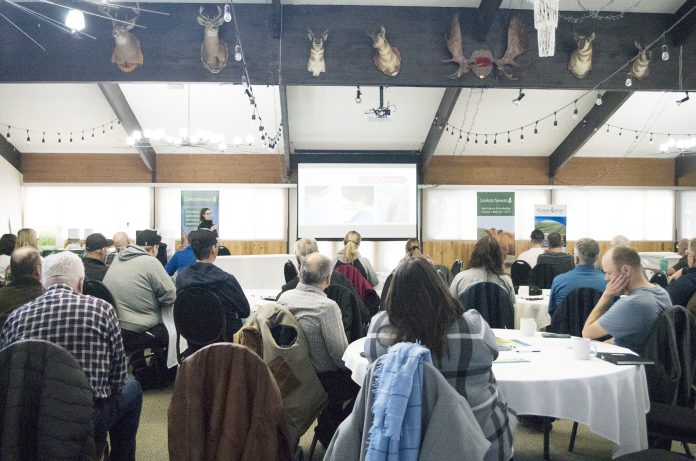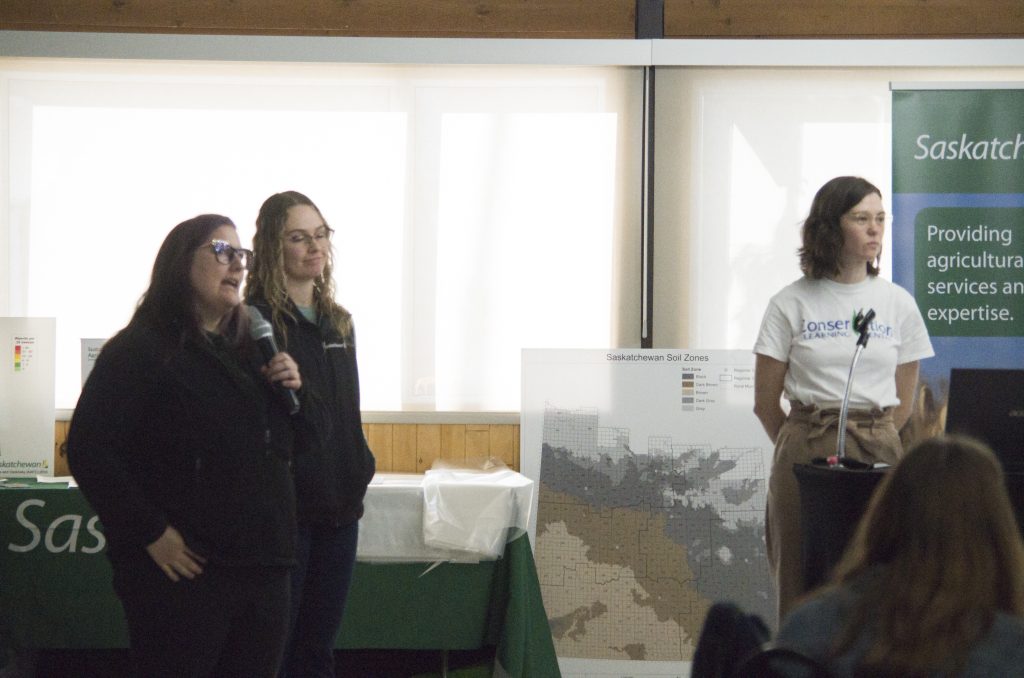
Farmers from across the Prince Albert area gathered at the Wildlife Federation building north of the City on Wednesday to discuss more efficient ways to spray their crops in difficult conditions.
The discussion was part of the annual winter Crop Talk hosted by the Conservation Learning Centre and Ministry of Agriculture. Keynote speaker Tom Wolf said finding more effective ways to spray crops has environmental and economic benefits for farmers, it’s just a matter of getting information about best practices into their hands.
“I would say by and large they understand the high speed—high boom application method isn’t useful, but they really want other doors to be opened,” Wolf said during an interview. “If I say, for example, don’t do this, I would also want to say, do this instead, right? So the instead part is to improve your productivity in other ways.”
Farmers across the country face mounting bills, with total expenses climbing to $11.5 billion in 2021. Fertilizer costs were the biggest reason for the jump, with Statistics Canada reporting the largest year-over-year increase in fertilizer prices since 2008. However, herbicide costs also remain high, with Canadian farmers spending a total of $1.1 billion and $1.5 billion combined on herbicide every year.
Wolf said helping farmers spray more effectively can reduce those costs, while also having environmental benefits.
“In many ways, it is economic because that’s really the driver of everything,” he explained. “You want to be able to get the job done at the right time so that it works properly. If you delay an application you might lose some yields because the weeds have advanced or the disease has advanced, but it’s also environmental.

“If it’s windy, the spray may move into sensitive areas, it may harm neighbouring crops, it may harm ecosystems (and) waterways. We want to avoid that as well and we do that by just reducing spray drift.”
A big part of minimizing that drift is slowing down, something Wolf said farmers are happy to do, provide they can make up the time in other areas.
“You’re going to lose some time,” he said. “You’re going to love some acres per hour if you do that, but you’re going to make it back investing in things like logistics. For example, how long does it take to fill your sprayer? How long does it take you to clean your sprayer? What else are you spending time on that isn’t spraying related on a spray day? Shave those times, and then that time will give you extra hours in the day to do the spray job.”
Spraying was one of several topics up for discussion at Wednesday’s meeting. Farmers also had a look at some of the Conservation Learning Centre’s research on cover cropping and fertilizer efficiency.
She said Wednesday’s crop talk is vital for getting recent research into the hands of farmers.
“It’s something that’s being done a lot right now in ag research, but we don’t have that local demonstration and research to back it up,” CLC acting onsite manager Zoe Galbraith explained. “That’s one of the projects we undertook this year, to try to get some data behind these practices that are being used.”

